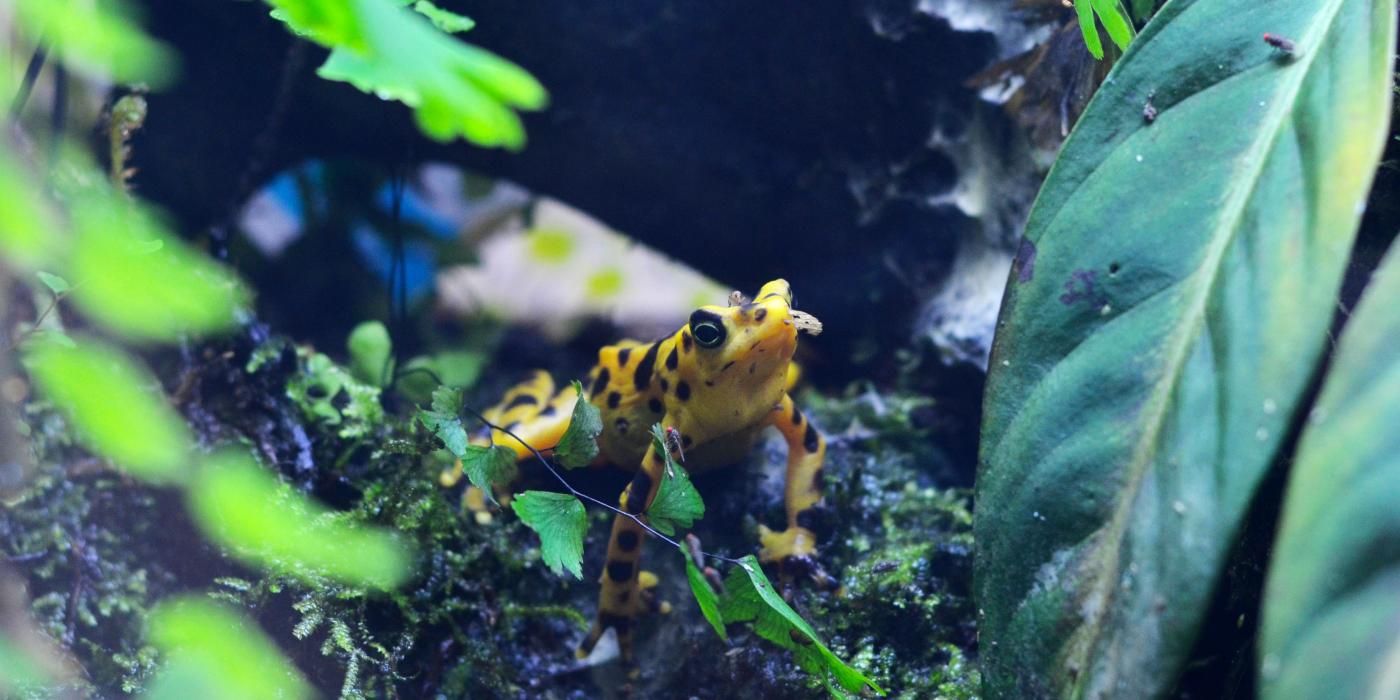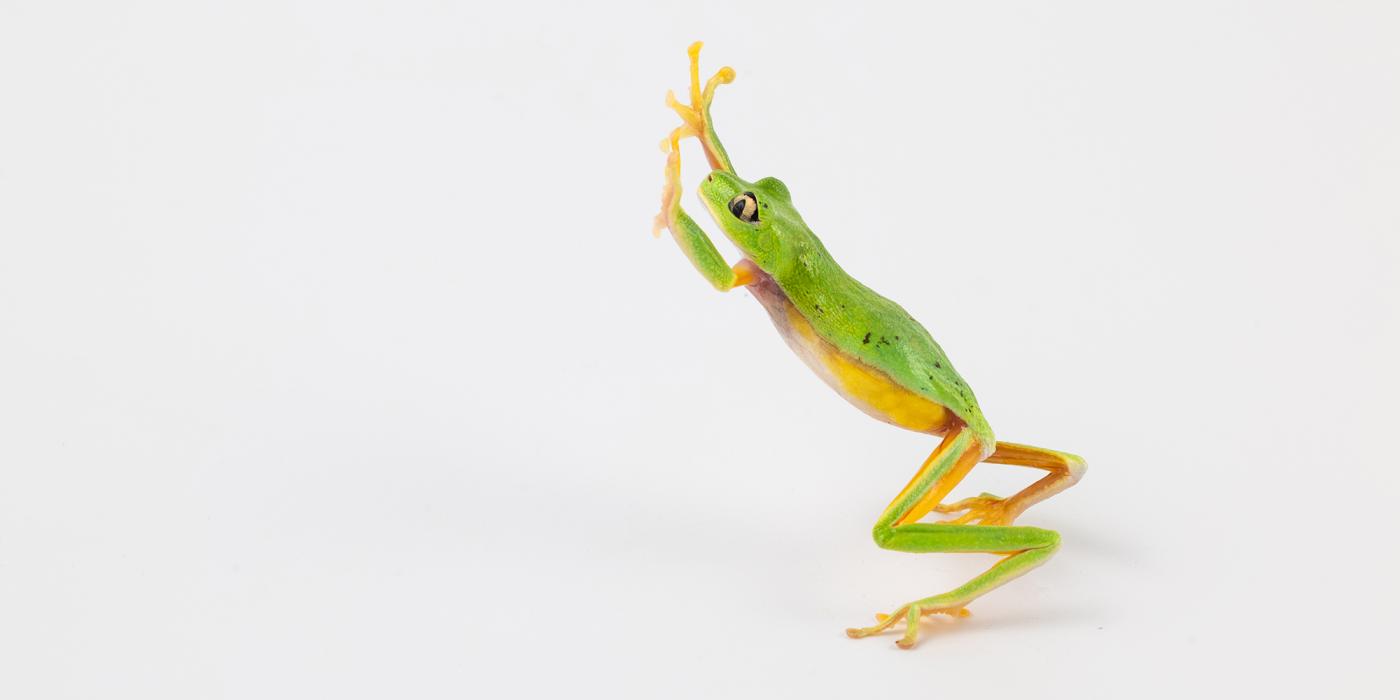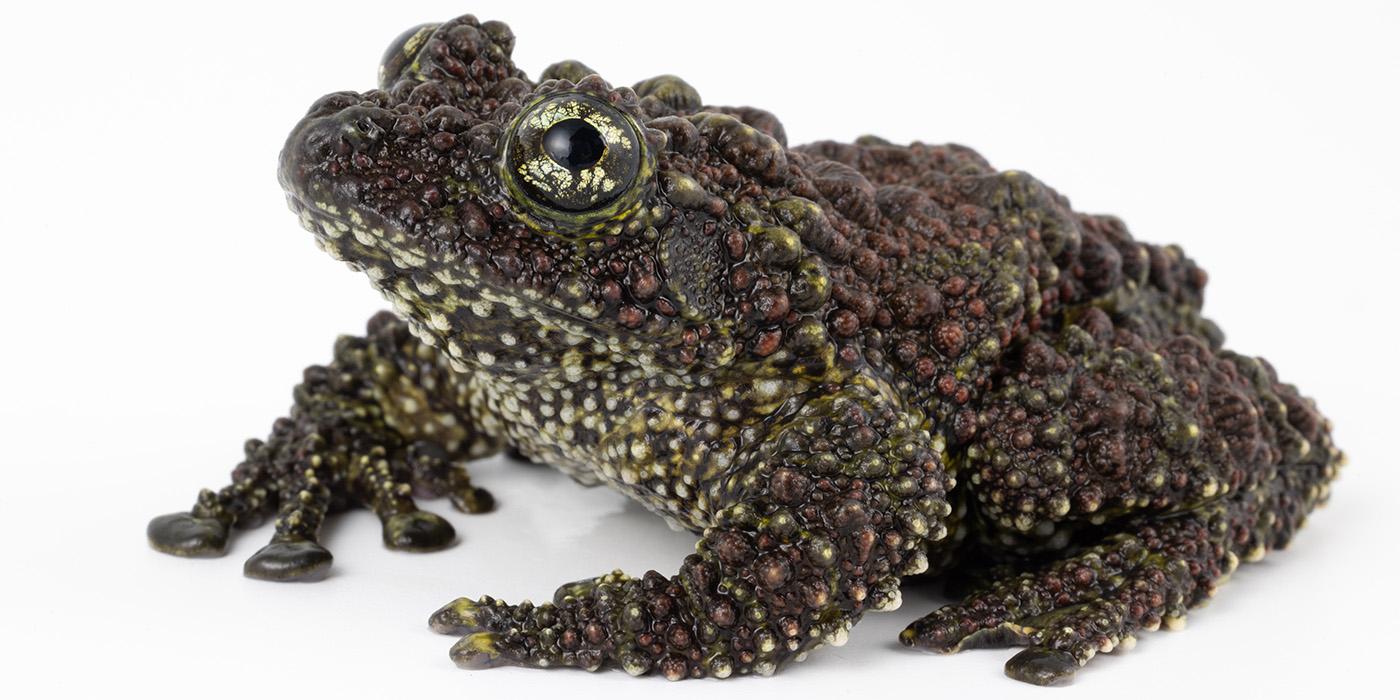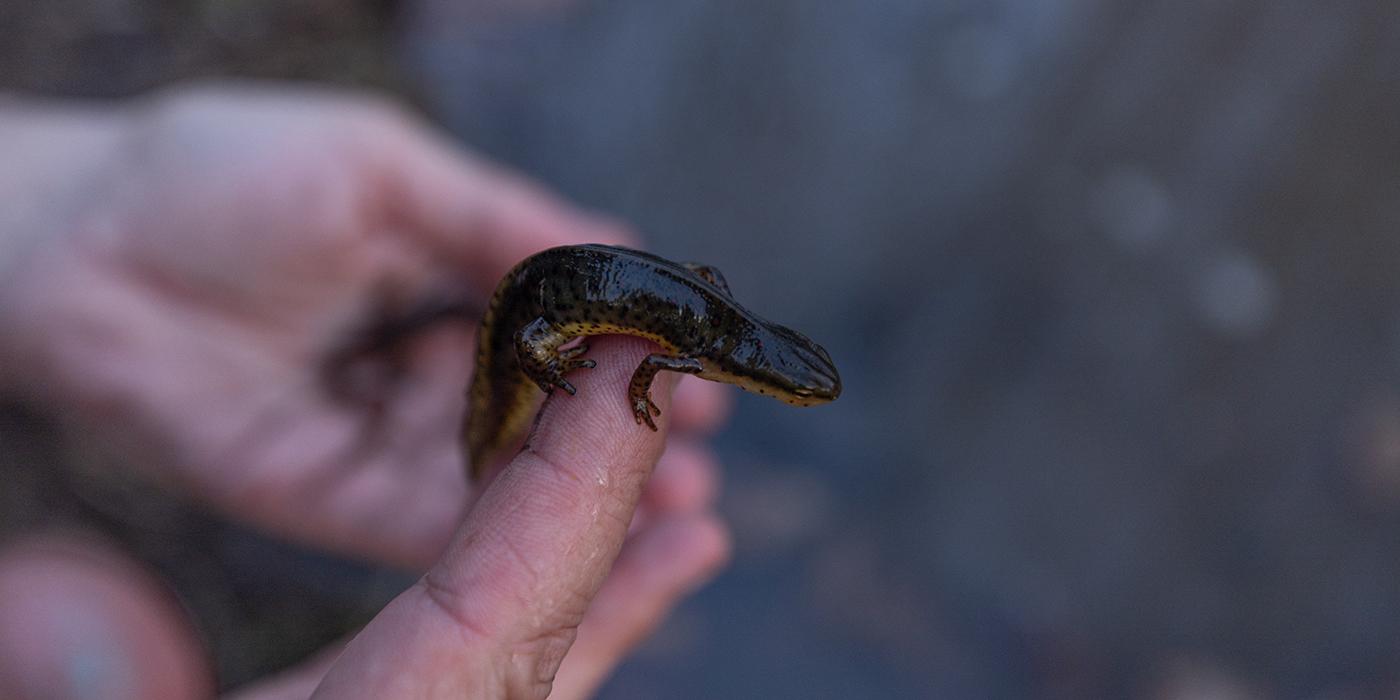Is a “Living Pharmacy” the Key to Curing Chytrid in Frogs?
For decades, scientists have wondered whether the key to saving frogs from the deadly chytrid fungus lies in their skin. Could they genetically modify bacteria found in the frogs’ mucus layer and boost its antifungal properties, in effect creating a “living pharmacy” on the frogs? Smithsonian Conservation Biology Institute scientist Brian Gratwicke and partners set out to test whether probiotics could protect the frogs from their fungal foe. Find out in this Q+A with Dr. Gratwicke! The results of this study were published Oct. 18, 2021, in the journal ISME Communications.
What is chytrid?
The amphibian chytrid fungus is a fungal pathogen that exclusively affects frogs. A frog maintains homeostasis using its skin. When the chytrid fungus infects the frog’s skin, it mucks up its ability to drink, exchange ions and function properly. For frog species that are not resistant to this disease, it infects their skin and ultimately leads to a heart attack, killing them.
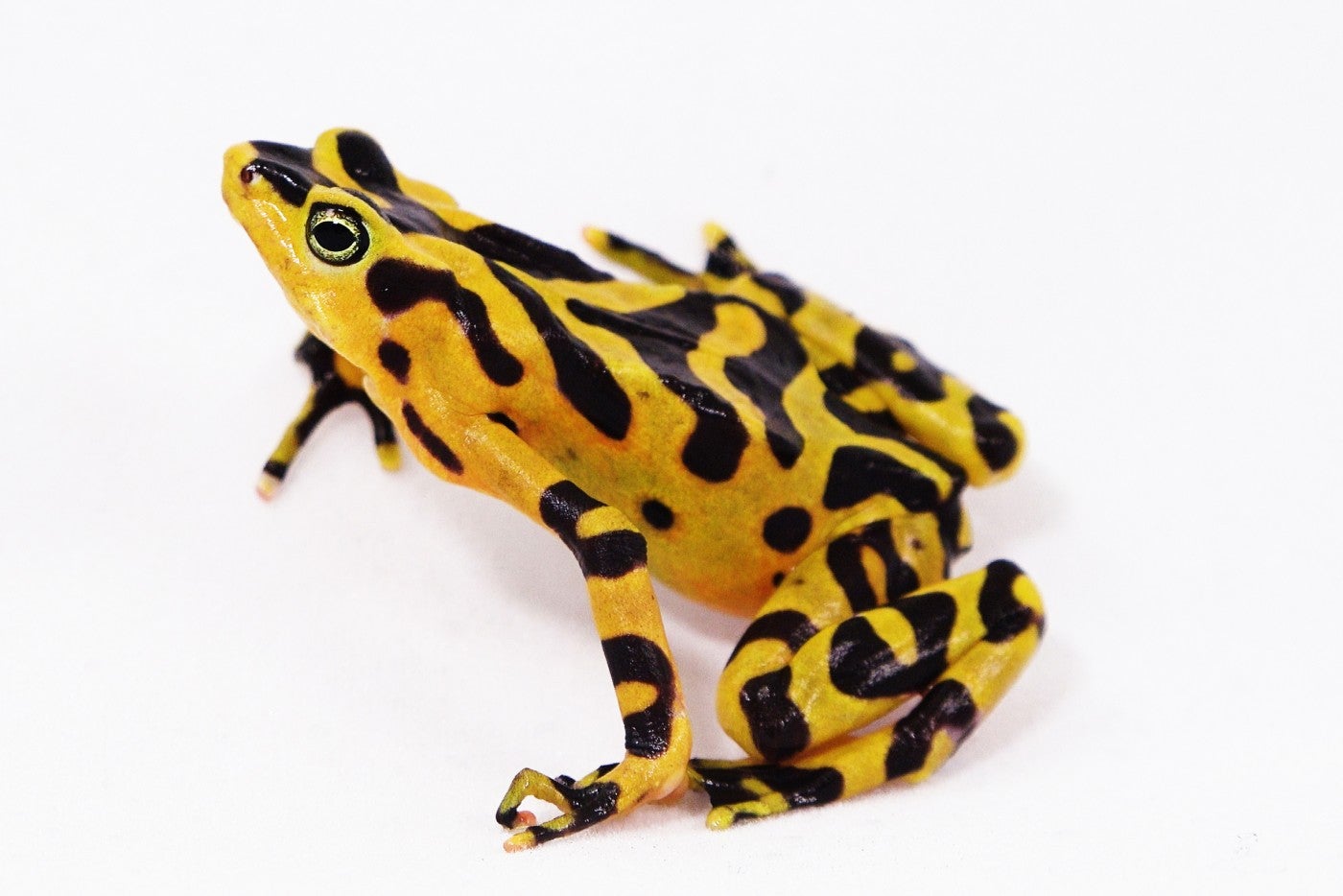
How does it infect frogs’ skin?
The chytrid fungus starts out as a swimming zoospore — think of it like a microscopic tadpole. It smells out the frog’s skin, burrows into it, and begins to grow. When that spore has fed off of the frog, it will produce its own fruiting body, called a sporangium, which is full of lots of new spores. Those spores will swim out, and either reinfect the same frog, or swim out into the stream and find a different frog.
Why do some frogs fare better around chytrid than others?
Some species secrete anti-fungal chemicals directly or have symbiotic bacteria living on their skin that secrete anti-fungal metabolites. It appears that certain groups of frogs really don’t have very good protection against the disease. One group that I work with in Panama is Atelopus, or harlequin toads. They are very, very susceptible to the disease.
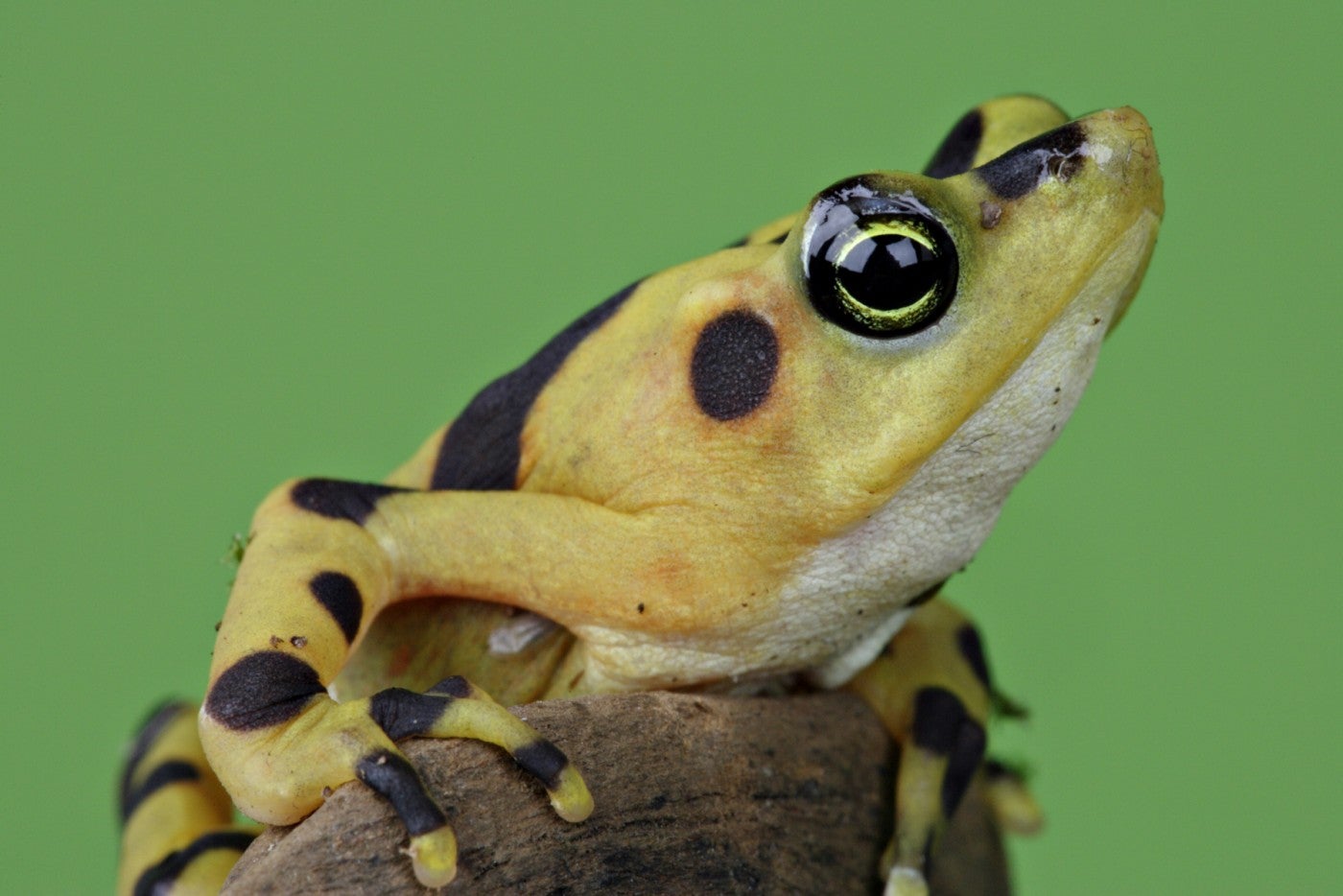
How did the idea to develop a probiotic cure for chytrid come about?
We’ve been trying to develop a probiotic cure for the amphibian chytrid fungus for well over a decade—since 2008. We tried anti-fungal probiotic experiments in the past—one using a bacteria found on salamander skin, and others from Panamanian frogs. Unfortunately, neither of those protected Panamanian golden frogs from the disease, possibly because there were not enough of them to have a protective effect.
Another idea—a very technically challenging one—had also been circulating in the frog community for many years. Could we genetically engineer a bacteria that was already well-adapted to survive on a Panamanian golden frog’s skin to produce greater amounts of the anti-fungal metabolite?
We hoped that by putting genetically modified core-skin microbes back on the frogs’ skin that they would thrive and produce anti-fungal chemicals indefinitely. In other words, we wanted these bacteria to serve as a “living pharmacy” that would be a permanent fixture on the frogs’ skin and protect them from chytrid for a long time.
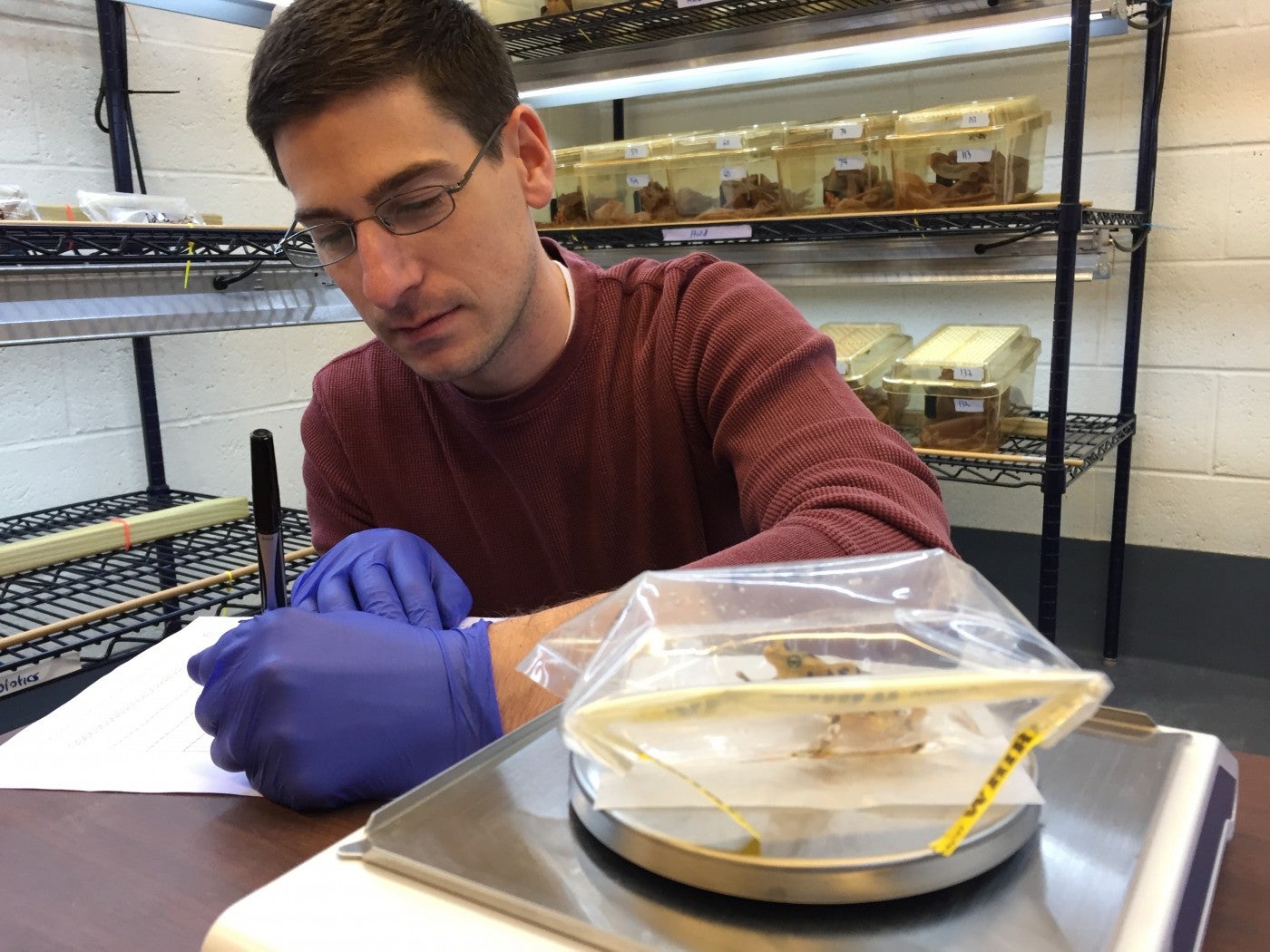
How did you genetically modify the bacteria?
We set up two experiments to test our hypothesis. In the first, we applied a singular type of bacteria to the frogs’ skin that was genetically modified to produce greater amounts of anti-fungal metabolites. In the second, we applied a cocktail with a consortium of bacteria that were already producing antifungal metabolites and were isolated from golden frogs, so we knew they could survive on their skin. Because we were not able to genetically engineer the microbes ourselves, we collaborated with the Synthetic Biology Center Dept of Biological Engineering at the Massachusetts Institute of Technology (MIT) to develop the probiotic.
For the experiment that studied the single-species bacteria, we sent MIT eight core skin microbes. They were able to genetically modify one of those eight—the one we used in this experiment. For the consortium experiment, we isolated seven kinds of antifungal bacteria from golden frog skin. We thought that by introducing a whole community of anti-fungal bacteria to the frogs’ skin, some might “stick” and compete better in the community of skin microbes, or microbiome.
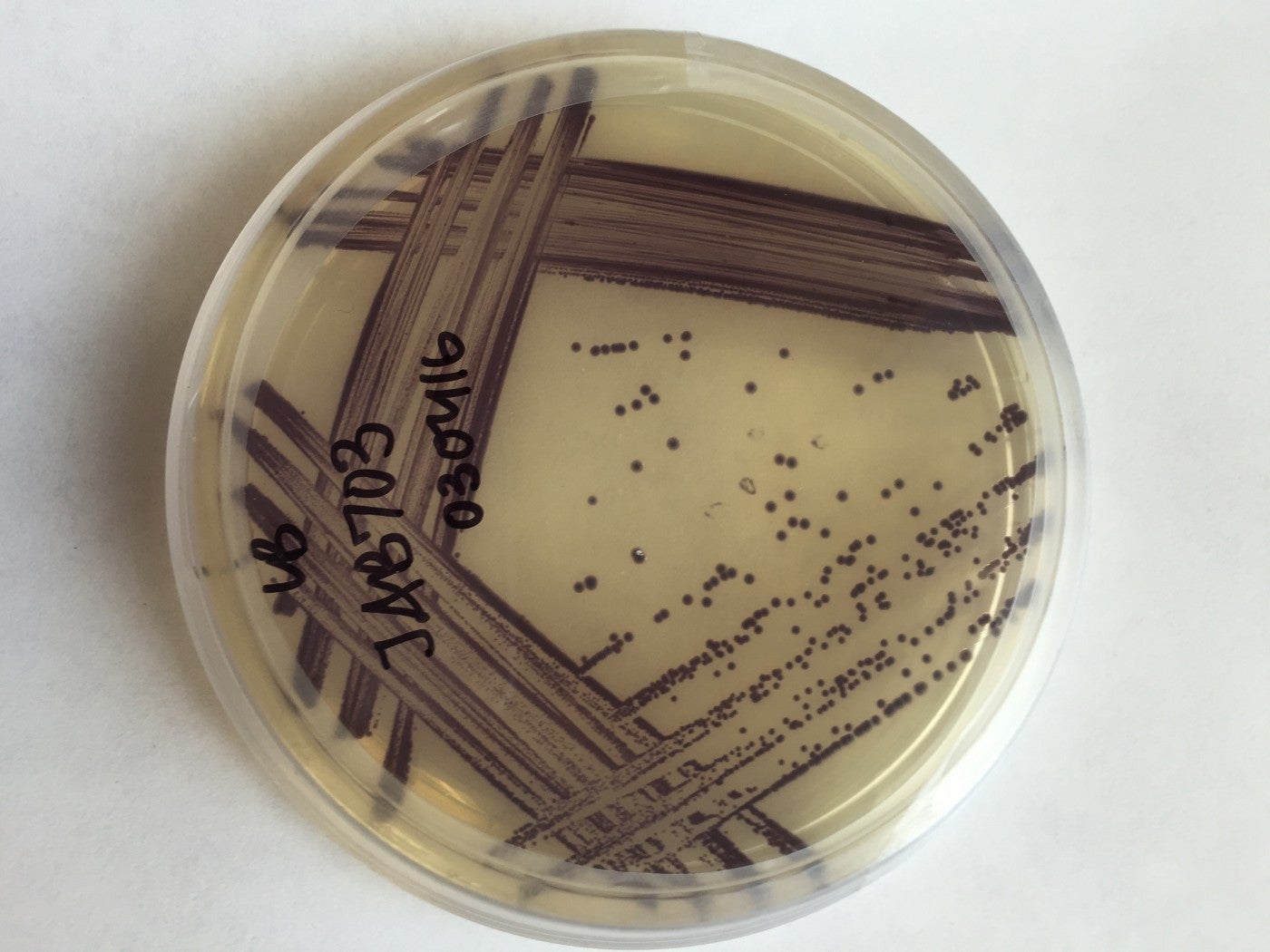
Scientists at SCBI collaborated with the Synthetic Biology Center Dept of Biological Engineering at the Massachusetts Institute of Technology (MIT) to develop a genetically modified bacteria.
How did you determine if the bacterium’s anti-fungal properties had increased?
Once we received the genetically modified bacteria, we mixed their metabolites with the live chytrid fungus in a test tube and found that their anti-fungal properties had increased.
This was a really exciting moment for us. We had this bacteria that was producing oodles of anti-fungal metabolites. All we needed to do was show that it could do the same thing on a living frog’s skin.
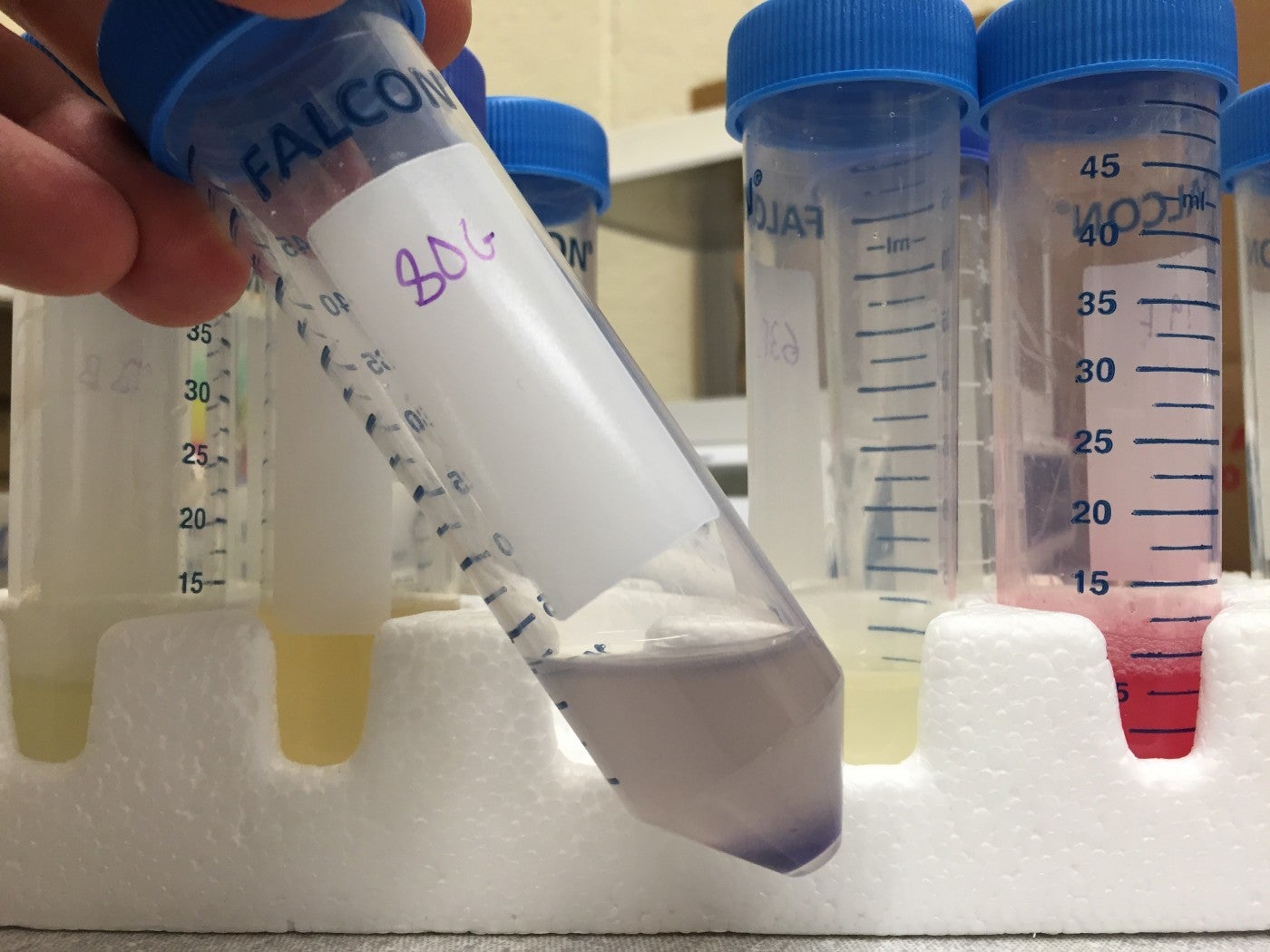
How did you apply the genetically modified bacteria to the frogs?
Before we applied the new bacteria to the frogs’ skin, we treated the frogs with antibiotics to decrease the number of existing bacteria, which helped the new genetically modified bacteria to “stick.” We did not want the native microbes to outcompete the genetically modified bacteria and prevent them from becoming established.
Past probiotic trials have shown that if you expose these frogs to a huge amount of bacteria, the frogs can have an immune response that can kill the bacteria. We wanted to allow the bacteria to colonize the frog without risk of the frog rejecting the bacteria, so we employed a “step up” inoculation plan for the single-bacteria experiment.
We placed the frogs in a bath—100 milliliters of solution—every other day for 10 days. On day 1, the solution contained 375,000 bacteria cells per milliliter. On day 3, we stepped the number of bacteria up to 750,000 cells per milliliter. On days 5, 7 and 9, the frogs received 1.5 million cells per milliliter.
The frogs that received the consortium cocktail followed a similar bathing schedule. Because their solution contained seven kinds of bacteria, we kept the same low dose for every bath. These consecutive low doses amounted to a high dose of bacteria by day 10.
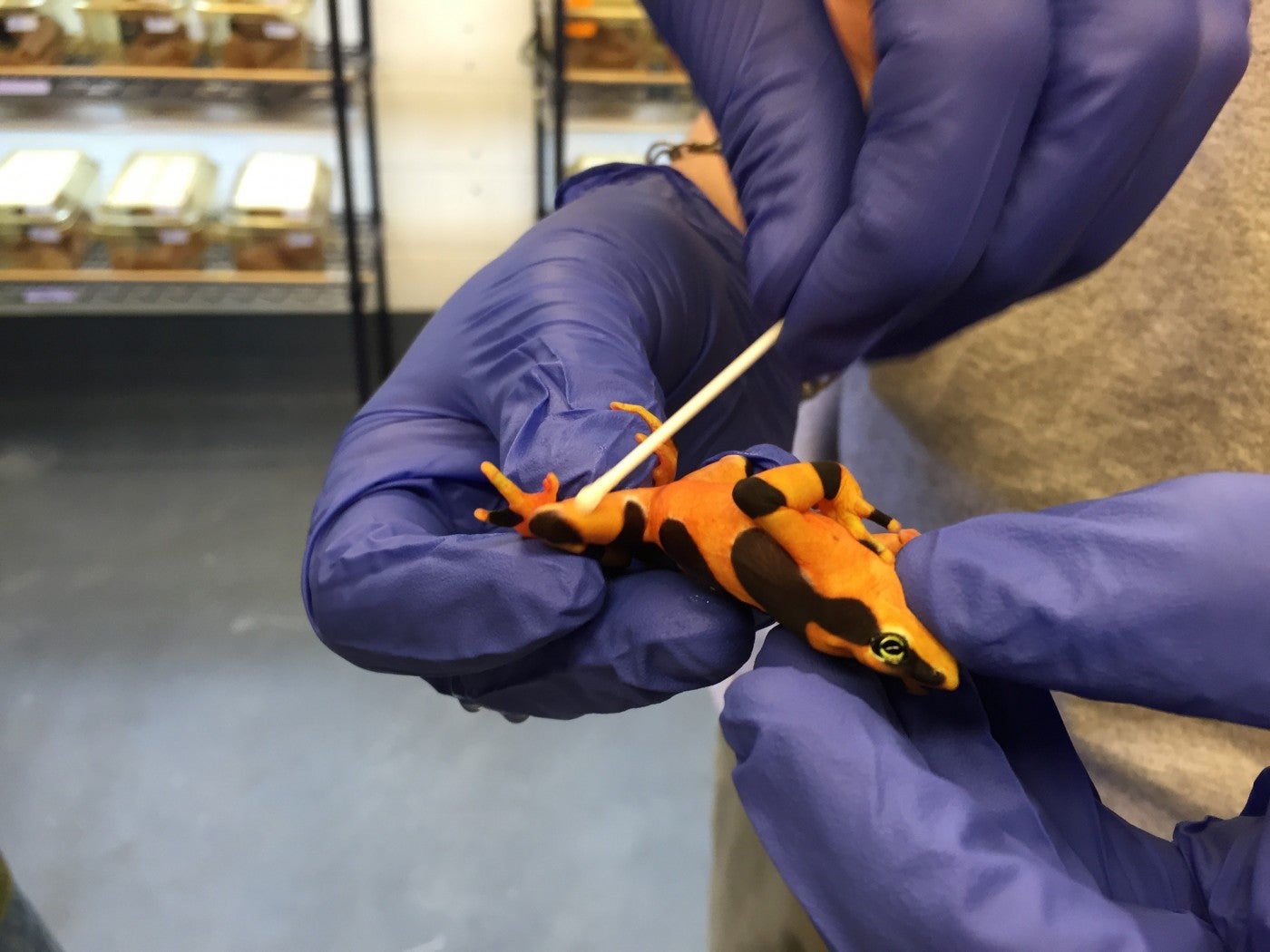
Did the frogs experience any side effects from the probiotic?
We did not see any adverse effects or reactions from the bacterial probiotic treatment. They went very smoothly. One day after the final dose was administered, we swabbed all of the animals to get a baseline bacteria survey. We found that the bacteria were present on the frogs’ skin in good numbers.
What happened when you applied the chytrid fungus?
We applied the chytrid fungus to the frogs one day after the last probiotic treatment and then swabbed the frogs four weeks after applying the chytrid fungus. We found that the native core bacteria had displaced the genetically modified bacteria. For some reason, the genetically modified bacteria were not able to compete as well on the frog’s skin as well as the original unmodified strain. With the cocktail consortium, three of the bacteria stuck pretty well, but the other four disappeared.
Ultimately, we found that whether the frogs received the single bacteria solution, the consortium solution or were part of the control group, they all got chytridiomycosis, and they all died at the same rates. So, as it turns out, neither treatment offered the frogs protection from the chytrid fungus.
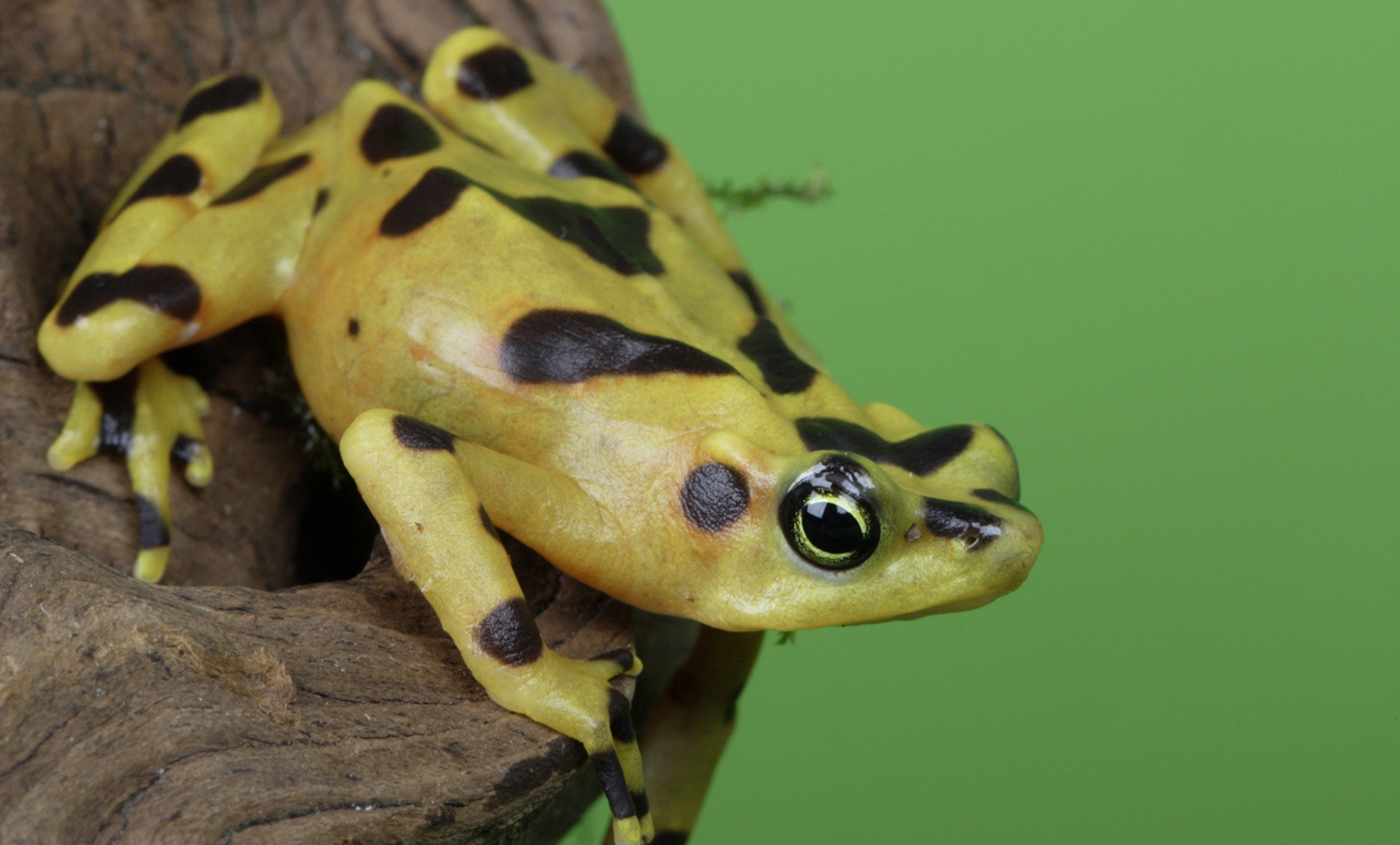
Why do you think the probiotic treatment was not effective?
A frog’s skin is a very unique organ. It is not like a mammal’s skin, which acts like a barrier. Frogs’ skin is much more permeable to the environment. A key component of their skin is the mucus layer, and that is full of commensal bacteria that do no harm, or symbiotic bacteria that can have beneficial effects.
There are more than 3,000 species of bacteria on frogs’ skin—and they’re all competing with each other. Part of the challenge we face is that we don’t know enough about frogs’ bacterial skin ecology to change their microbiome in such a way that would allow a different skin community to become established. The host (i.e the frog) creates the environment where the bacteria thrive, and the bacterial community really responds to the host, more than the bacteria we 'seed' it with.
What’s your takeaway from this project?
This research illustrates some of the challenges we face in manipulating microbiomes and in using synthetic biology to solve real environmental problems. Ultimately, we learned that it is difficult to manipulate a frog’s microbiome. It is also difficult to predict how a bacteria will function—will it persist, or will it become dormant in the community? Although our bacteria did well against chytrid in a test tube, once placed on a frog’s skin, the “living pharmacy” failed to protect its patient.
I’m very proud of this work. We have successfully tested two really challenging ideas that have been discussed in the amphibian community for many years. We got our answer—it just wasn’t the answer we wanted. This was a technically challenging experiment, but it was also one of the most innovative and interesting research projects that I’ve done in my time at the Smithsonian Conservation Biology Institute.
This story appears in the November 2021 issue of National Zoo News. The research was led by Dr. Matthew Becker, Dr. Robert Fleischer and Dr. Brian Gratwicke of the Smithsonian’s National Zoo and Conservation Biology Institute, and Dr. Jennifer Brophy and Dr. Christopher Voigt of the Massachusetts Institute of Technology.
Related Species:

